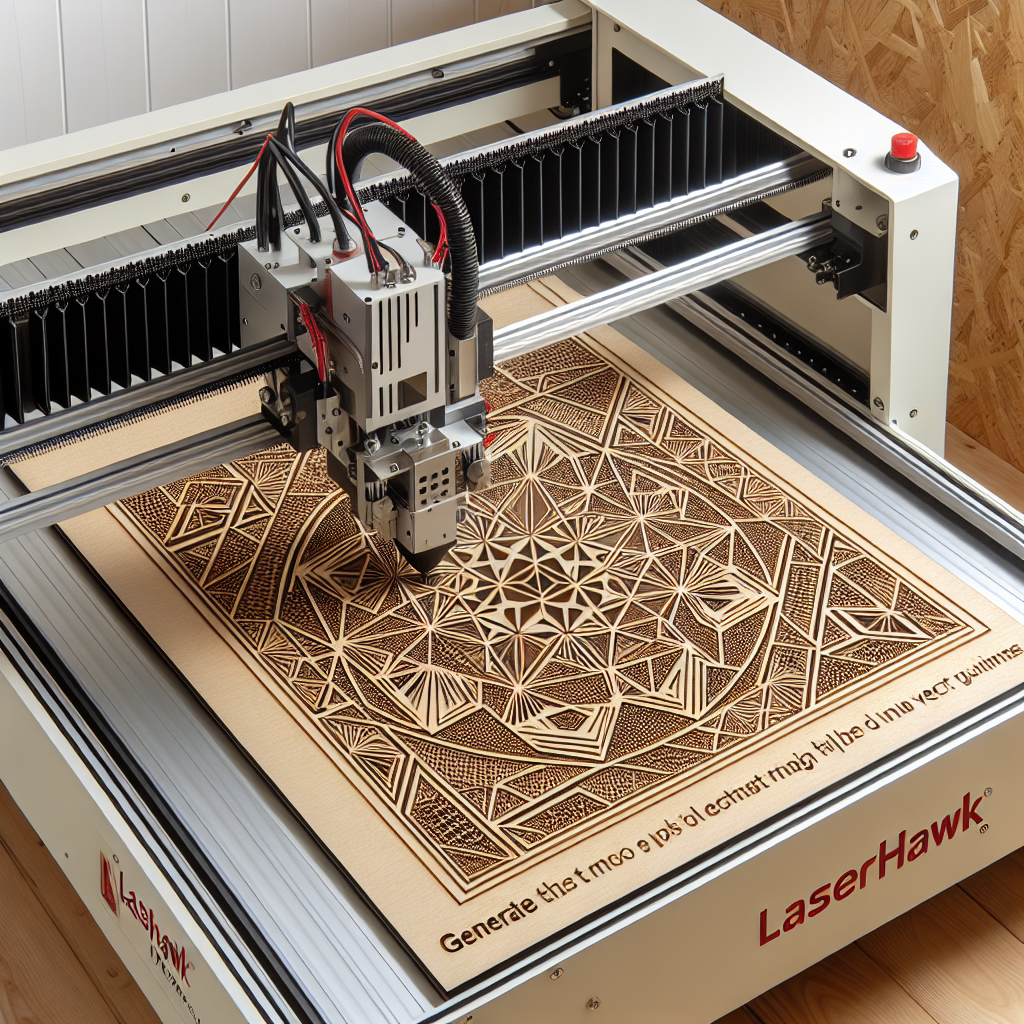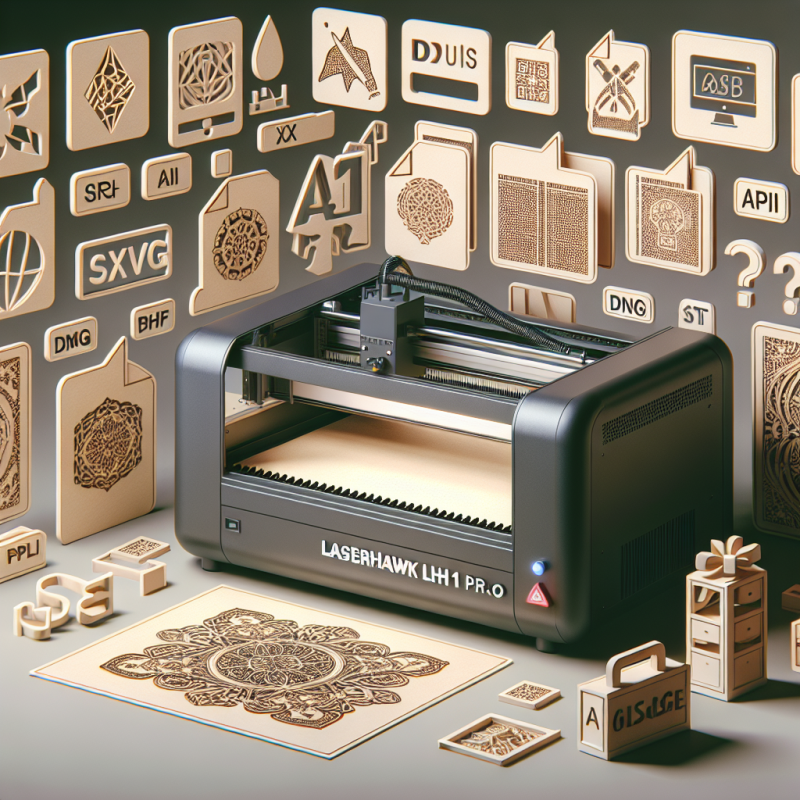Understanding File Formats for Laser Cutting and Engraving Machines
Laser engraving machines have revolutionized manufacturing and creative industries by enabling precise, high-speed material processing. A critical aspect of their operation is understanding what file does laser cutter use. This article explores the file formats compatible with laser engravers, their applications, and best practices to optimize your projects. Whether you’re a hobbyist or an industrial user, mastering these file types ensures seamless integration with devices like the LaserHawk LH1 Pro or Ortur Laser Engraver.
Common File Types for Laser Engraving Machines
The question of what file does laser cutter use often arises among new users. Here are the most widely supported formats:
- Vector Files (SVG, DXF, AI): These formats use mathematical paths to define shapes, making them ideal for precise cuts and engravings. SVG files are popular due to their scalability and compatibility with design software.
- Raster Files (BMP, PNG, JPG): These pixel-based formats are suitable for detailed engravings, such as photos or gradients. However, they lack the precision of vector files for cutting operations.
- CAD Formats (DWG, STL): Used in industrial settings for 3D modeling and complex geometries.
For example, the LaserHawk LH1 Pro supports both vector and raster files, allowing users to switch between intricate engravings and deep cuts effortlessly.
Why Choosing the Right File Format Matters
Selecting the correct file type directly impacts the quality of your output. If you’re unsure about what file does laser cutter use, consider these factors:
- Material Type: Wood and acrylic may require vector files for clean edges, while leather or glass often use raster files for shading.
- Machine Compatibility: Some laser engravers, like the Ortur Laser Engraver, prioritize SVG files, whereas industrial models may favor CAD formats.
- Design Complexity: Vector files excel at geometric patterns, while raster files handle organic shapes and gradients.
Pro Tip: Always convert text to outlines in your design software to avoid font compatibility issues during laser processing.
Software Tools for Preparing Laser-Cutting Files
To address what file does laser cutter use, you’ll need software to create or edit designs. Popular options include:
- Adobe Illustrator: Industry-standard for vector design.
- CorelDRAW: Offers robust tools for both raster and vector workflows.
- Inkscape: A free, open-source alternative for SVG file creation.
- LightBurn: Specifically designed for laser engraving machines, compatible with the LaserHawk LH1 Pro and other CO2/Diode lasers.
Did you know? LightBurn allows real-time adjustments to speed, power, and layer settings, streamlining the transition from design to physical output.
Optimizing Files for Different Laser Engravers
Understanding what file does laser cutter use is only half the battle. Optimization techniques ensure your designs translate perfectly to materials:
- Resolution Settings: Use 300-600 DPI for raster engravings and 1000+ DPI for high-detail vector cuts.
- Color Mapping Assign specific colors to denote cutting, engraving, or scoring operations.
- Bleed Areas: Extend design elements beyond the cut line to account for material burn-off.
For devices like the Ortur Laser Engraver, test runs on scrap material help fine-tune settings before final execution.
Common Challenges and Solutions
Even after learning what file does laser cutter use, users face technical hurdles:
- File Corruption: Always save backups in native and universal formats (e.g., SVG + AI).
- Scaling Errors: Confirm dimensions in both design software and the laser’s control interface.
- Layer Misalignment: Use registration marks for multi-pass projects.
Question: Why does my engraved image appear pixelated despite using a high-resolution file?
Answer: This often occurs when raster designs are scaled beyond their original DPI capacity. Resample the image or switch to vector paths for sharp results.
Future Trends in Laser Engraving File Compatibility
As laser technology evolves, so do file requirements. Emerging trends include:
- 3D File Integration: STL and OBJ formats for topographic engravings.
- AI-Driven Optimization: Software that auto-converts low-res images into laser-ready vectors.
- Cloud-Based Workflows: Direct file uploads to machines like the LaserHawk LH1 Pro via Wi-Fi.
Question: Will traditional file formats become obsolete?
Answer: Unlikely. SVG and DXF remain staples due to their open-source nature and cross-platform reliability.
Frequently Asked Questions
Q: Can I use PDF files for laser cutting?
A: Yes, but only if they contain vector paths. Raster-based PDFs may require conversion to SVG or DXF.
Q: How do I handle multi-color designs?
A: Assign different colors to separate engraving/cutting layers, then configure power/speed settings per color in software like LightBurn.
Q: Why does my laser engraver reject certain files?
A: This usually stems from unsupported elements (e.g., embedded fonts) or incorrect resolutions. Simplify the design and consult your machine’s manual for format specifications.
Conclusion
Mastering what file does laser cutter use empowers you to unlock the full potential of devices like the LaserHawk LH1 Pro or Ortur Laser Engraver. By selecting appropriate formats, optimizing designs, and leveraging modern software, you can achieve professional-grade results across diverse materials. As the industry advances, staying updated on file compatibility trends ensures your workflows remain efficient and future-proof.
Final Question: Are proprietary file formats worth learning for specialized projects?
Final Answer: Only if your workflow demands industry-specific features. For most users, open formats like SVG and DXF provide sufficient flexibility.


